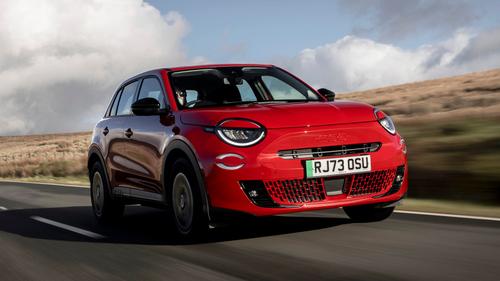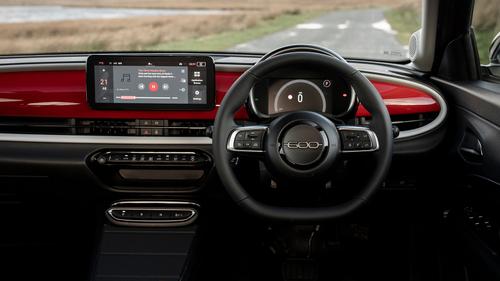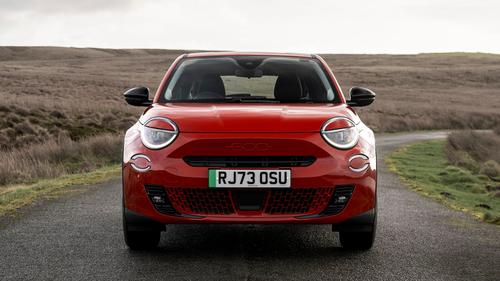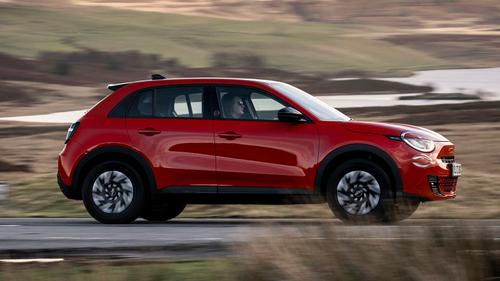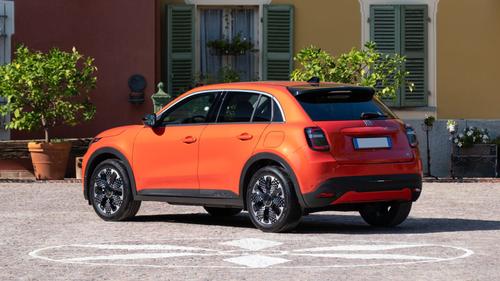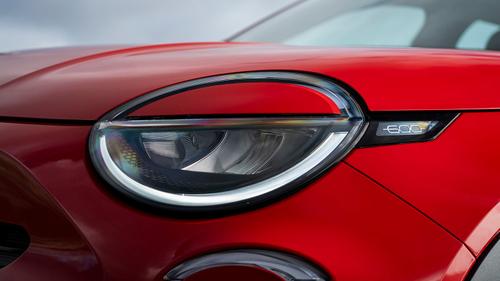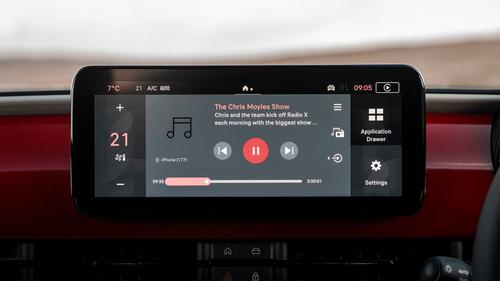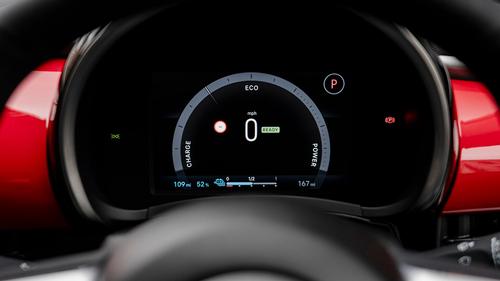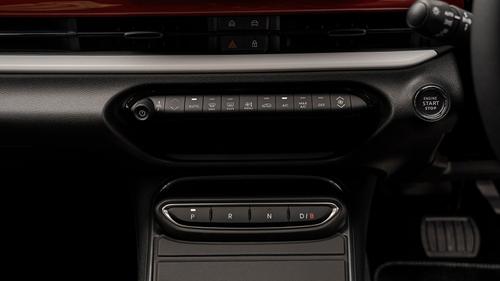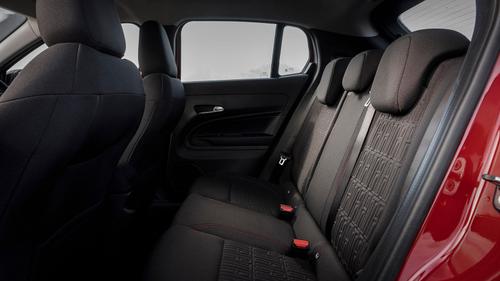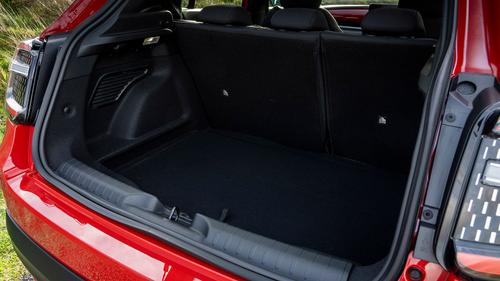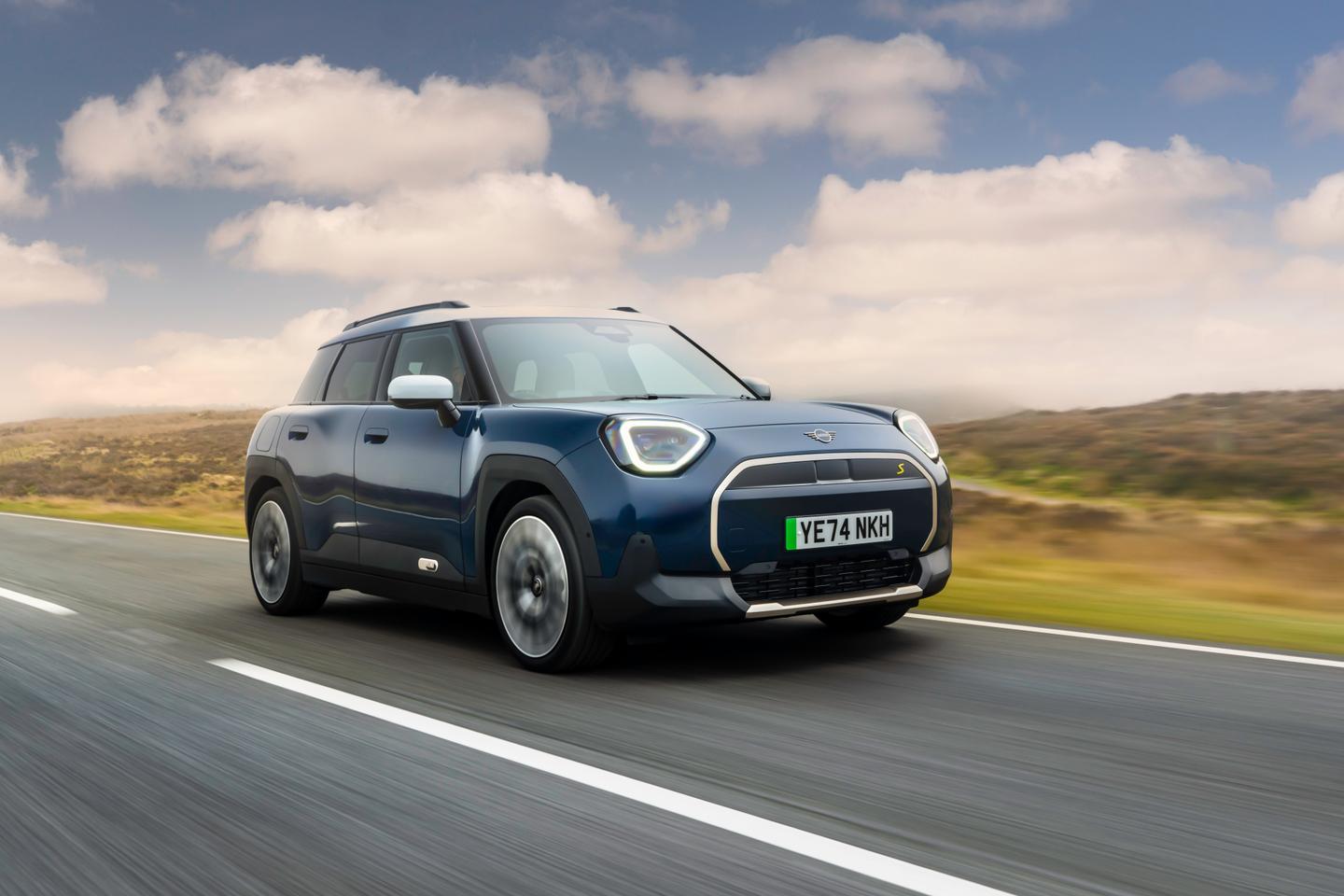











Fiat 600e Review

Fiat's had several goes at reimagining the dinky 500 city car as a bigger, more family friendly model. The Fiat 500X has the smaller car's looks but compromised practicality, while the 500L is practical but just looks a bit… odd.
So this is the 600 – the brand's latest family-friendly 500 and we reckon Fiat's got it pretty much spot on this time. We're testing the full-electric 600e version here, although there's also the standard 600 with a 100hp mild-hybrid petrol engine.
- Smooth, punchy electric motor
- Decent range and charging speed
- Cute styling inside and out
- EV specs aren't best-in-class
- Some rivals are more practical
- A few spots feel a bit cheap
Should I buy a Fiat 600e?
The 600e is based on the same mechanicals as the Jeep Avenger, Peugeot 2008 and Vauxhall Mokka. You wouldn't be able to tell from the outside, however, as the Fiat has its own distinctive look based heavily on the recently renewed Fiat 500e. That means rounded styling, complete with circular headlights and cute '50s details. With the roads full of SUVs obsessed with looking mean and imposing, the friendly-faced 600 feels like a breath of fresh air.
"The Fiat manages to feel distinct from behind the wheel, mainly thanks to the shock of colour that's stretched across the dashboard"
The retro flavour is more obvious inside. You'll spot a wide span of glossy coloured plastic across the dashboard like an old Smeg fridge, which helps offset the darker interior plastics, plus a rounded binnacle for the driver's dials just like the smaller 500. There's also neat piping on the edges of the seats, which you'll find upholstered in recycled cloth in the RED trim, with ivory-coloured faux-leather on upgraded La Prima models. The seats have 'Fiat' script embossed into the fabric, so your passengers need never doubt what car you're driving.
Where the old 500X fell short was in terms of passenger space. Despite being nearly 10cm shorter, however, the 600 actually offers a little more room. We'll cover the car's practicality in more detail below, but four tall adults will just about fit in the 600, as will their luggage if they can pack fairly light. It's still a little smaller than the most practical models in this class, but it still makes pretty effective use of the space it takes up on the road.
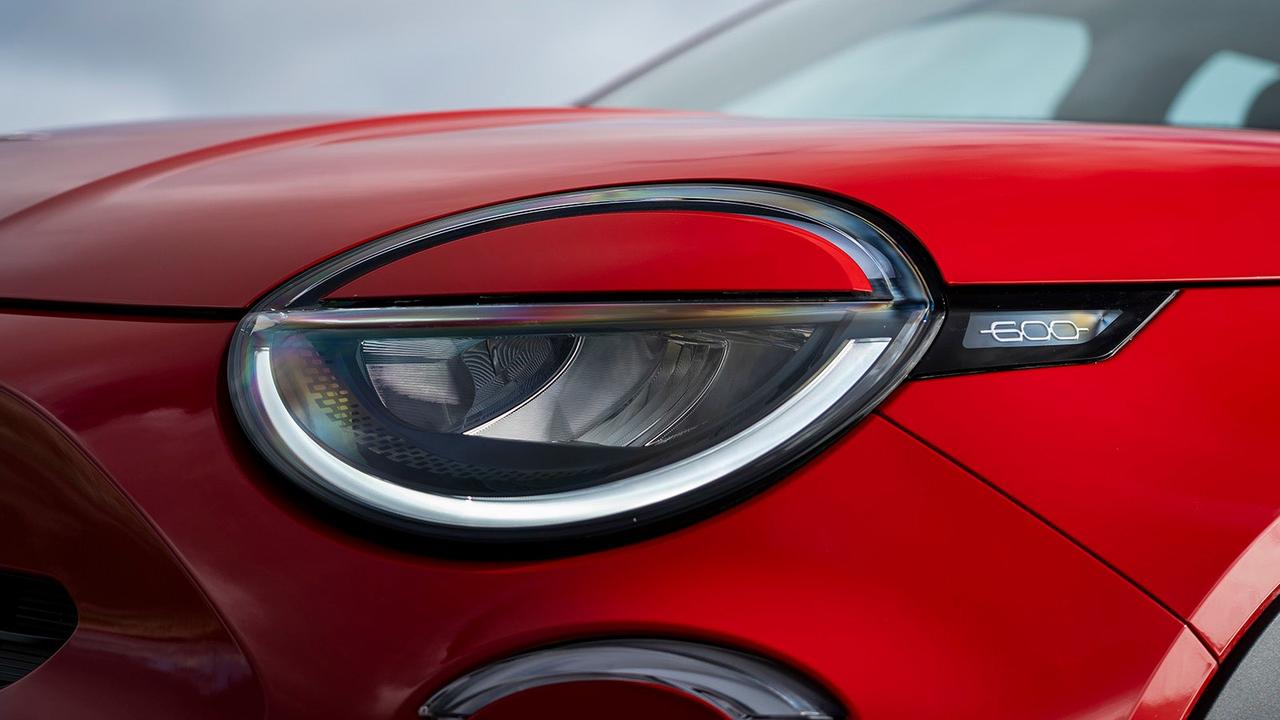
As this is the 600e, you'll find a 54kWh battery pack slung underneath the car's floor and a 156hp (115kW) electric motor under the bonnet. This is the same hardware you'll find in the updated 2008, Avenger and Mokka, with the 600e returning similar range and performance specs. The car claims 254 miles on a full charge and a nine-second 0-62mph dash.
Like all EVs, this setup works best for drivers who can charge at home or work. Do so and you'll enjoy a dramatic reduction in your per-mile costs, as well as the 600e's greater performance and refinement. For buyers without easy access to EV charging, the regular 600 is considerably cheaper and comes with a 1.2-litre mild-hybrid engine mated to a six-speed automatic gearbox with either 100hp or 136hp. Both versions claim more than 55mpg on average.
The entry-level RED trim on the 600e costs just a fraction above £30,000 as a brand-new car at the time of writing. That undercuts the mechanically related Peugeot e-2008 and Vauxhall Mokka, although the Jeep Avenger is essentially the same price. That figure doesn't compare especially well to some recent EVs like the MGS5 EV and Kia EV3, but now the 600e has arrived as a nearly new car on the used market, it's now at a much more competitive price point.
Interior and technology
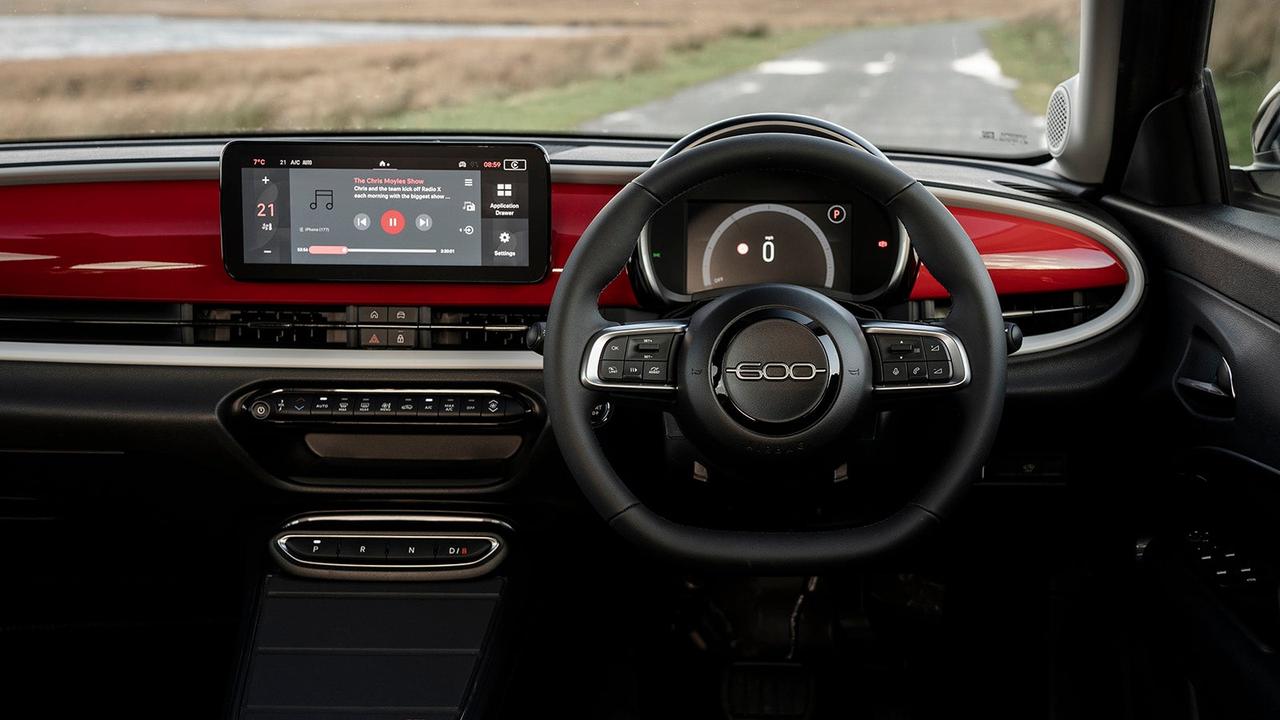
There's plenty of switchgear in the 600e that's shared with the Jeep Avenger, such as the drive-mode selector and infotainment system touchscreen. That said, the Fiat manages to feel distinct from behind the wheel, mainly thanks to the shock of colour that's stretched across the dashboard. The rounded digital driver's dials echo the circular dash pod you find in the Fiat 500, with a circular power meter running around the outside and speed displayed in the middle.
The 600e is an affordable car, so the materials chosen don't feel as premium as you'll find in a Peugeot e-2008 for example. Our test car featured recycled cloth upholstery that looks nice with its contrast piping and embossing, but it doesn't feel particularly luxurious to sit on – you get faux-leather in La Prima versions. The centre console is moulded from durable but cheap-feeling plastic, and the front storage cubby includes a magnetic folding iPad-style cover – a neat idea in theory, but it doesn't fully retract in practice. And we wonder how grubby it'll look a few years down the line.
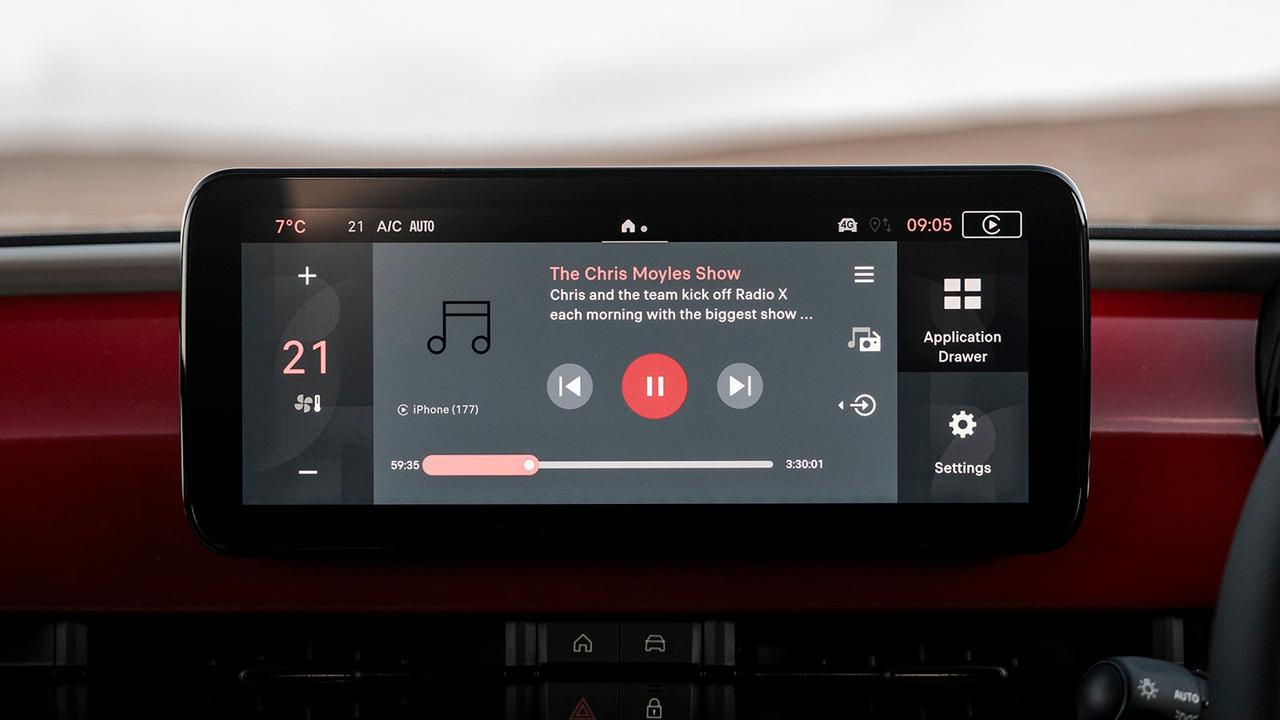
There's a widescreen-style infotainment system in the middle of the dashboard, but Fiat's resisted the temptation to shove all the controls onto the screen. You'll still find proper buttons for climate control adjustments and a real knob for the stereo volume – all of which means the 600e is intuitive to use and you're not hunting around the screen for the function you want. If we're being picky, the button-based gear selector lacks the satisfying mechanical feel of a more traditional PRND automatic shifter, or the fingertip convenience of a column-mounted shifter.
We've few real complaints about the 600e's infotainment software. The graphics are sharp and the screen responds quickly to your touch, and all cars include Apple CarPlay and Android Auto as standard, which covers most of the functions you'll use everyday. We'd take a little more screen real estate if it was available, as the unit's relatively short height limits the size of on-screen icons, and we feel the smartphone-style homescreen with swipeable pages isn't very intuitive for less tech-savvy users.
Practicality
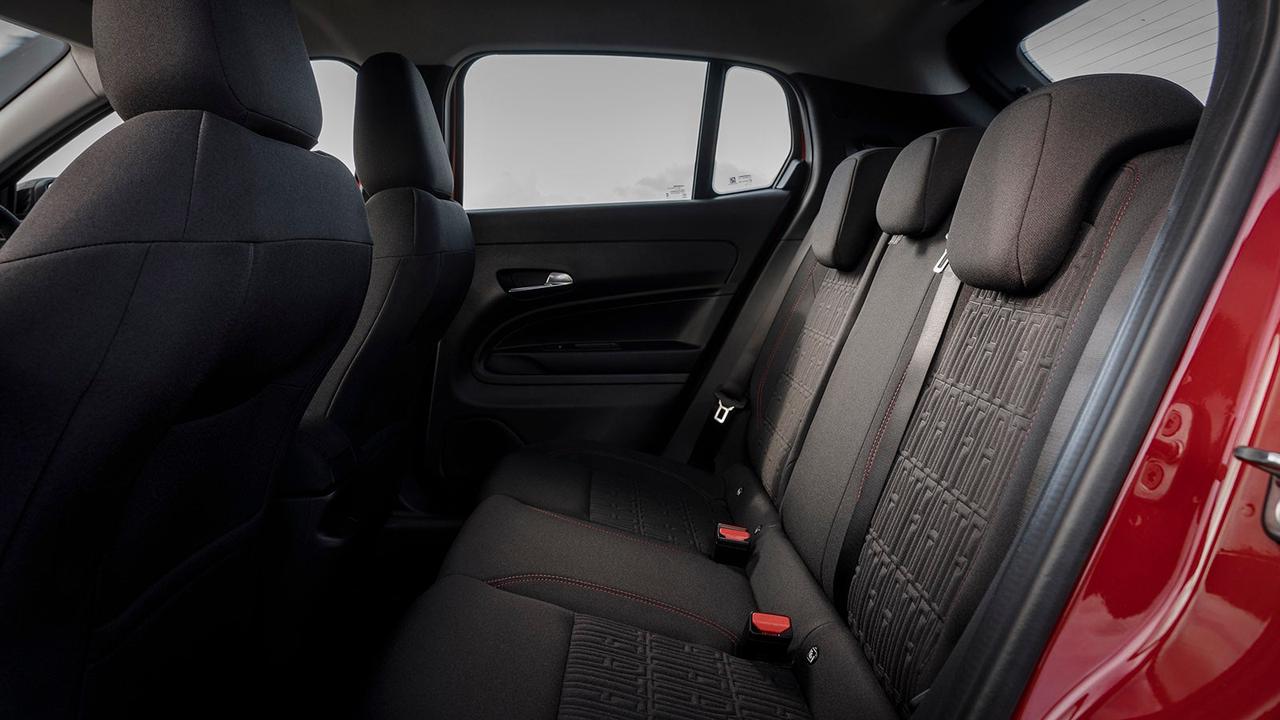
The 600e measures 4,171mm long. That's really quite compact in practice, coming up shorter than the older Fiat 500X and family hatches like the Volkswagen Golf. That makes the 600e very easy to park in tight spaces – a task further simplified by the decent all-round visibility and standard rear parking sensors. Upgraded La Prima cars get a 180º reversing camera and all-round sensors.
Despite that small footprint, space is reasonably good. There's a little more room for passengers than you'll get in a similarly sized family hatch, with enough room for an average-sized adult to sit behind a tall adult in the front seats. Lofty occupants in both rows will feel cramped, however, and the rear-seat backs are quite upright, which pushes your head towards the roof, robbing some of the car's already-limited headroom.
The upright seats and limited back support might not be comfortable for everyone, especially on a long journey.
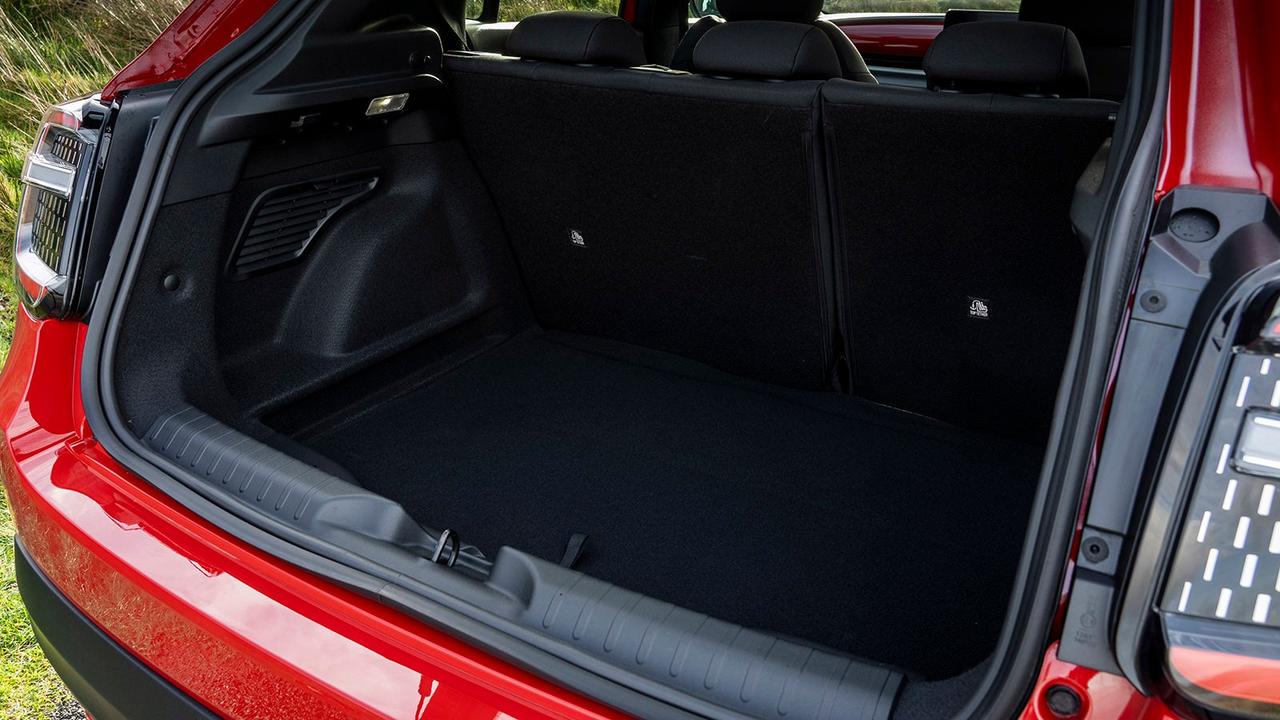
On-paper, the 600e's boot space is 360 litres. That beats the dinky Vauxhall Mokka and broadly matches the Jeep Avenger, but falls short of the 434-litre space in the Peugeot e-2008. Compared to the rest of the class, the 600e's figure is fairly average, with the Kia EV3's 460-litre comprehensively outclassing the Fiat. The opening is wide and square at least, without too much intrusion from the brakelight housings.
Cabin storage is also fairly average. There's the aforementioned front cubby with a magnetic folding lid, plus more storage between the front seats, although none of these spaces are large enough to store a handbag or satchel. The glovebox is on the small side and awkwardly sectioned, and the door bins are long but fairly narrow.
Engines and performance
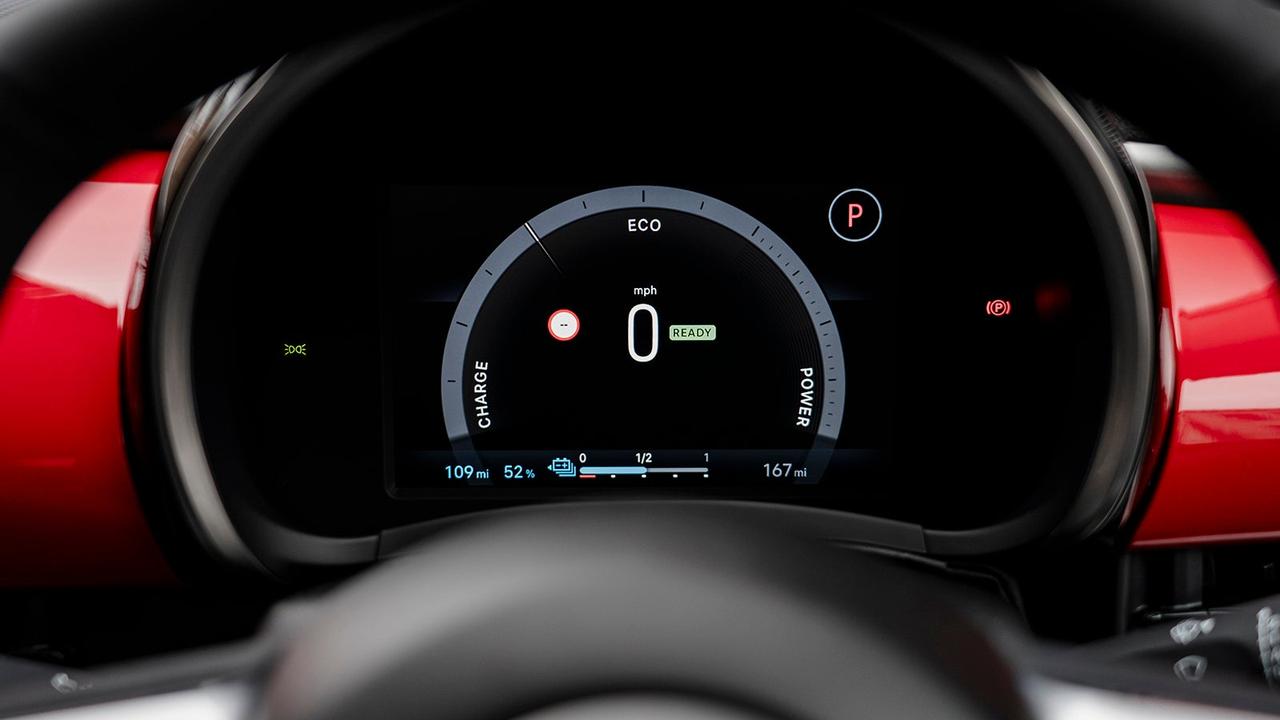
Assuming you're not shopping the super-sporty Abarth 600e, there's just one battery and motor option for the 600e. You get a 54kWh battery and 156hp electric motor – exactly the same setup you'll find in the Peugeot e-2008, Jeep Avenger and several other models under the Stellantis umbrella. Claimed range is 254 miles, so expect around 180-200 miles in the real world depending on your speed and ambient temperature.
This setup doesn't feel especially different in the Fiat. You don't get the neck-snapping acceleration of more powerful EVs, but there's a strong and insistent surge whenever you plant your right foot. The power carries you all the way up to fast motorway speeds without any sense of strain and with barely any powertrain noise making it to your ears.
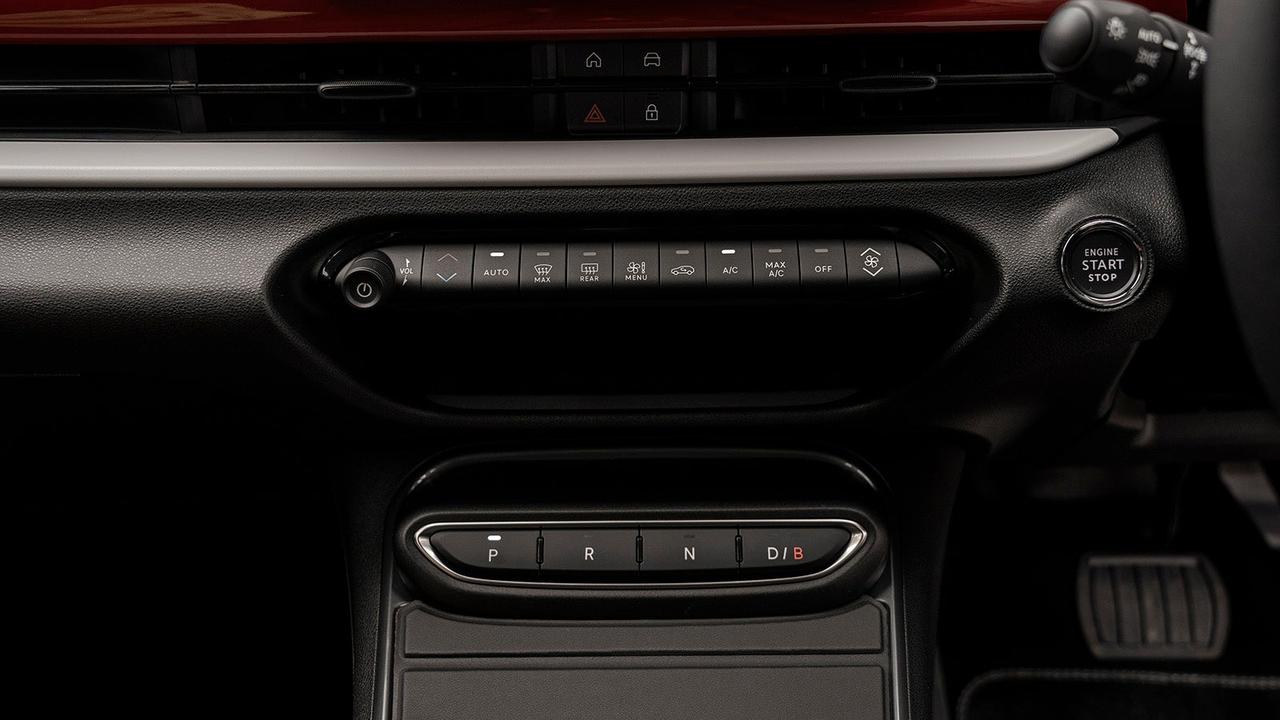
The 600e can DC fast charge at up to 100kW, which is a respectable figure but lags a little behind the best in class. As there's only 54kWh to fill, however, you can still jump from 20-80% in 27 minutes charging at 100kW. Like every other rival, you'll be able to complete a 0-100% charge using a 7kW home charger overnight although, in practice, you'll only have to top up a few extra percent each night most of the time.
Fiat's got the pedal tuning right for normal driving. The accelerator feels linear and isn't so hyperactive that you'll smack head your head against the seat every time you sneeze. There's also a predictable response from the brake pedal, although the brakes themselves felt softer than expected under hard braking, with a hefty stomp required to get the car slowed down quickly.
Driving and comfort
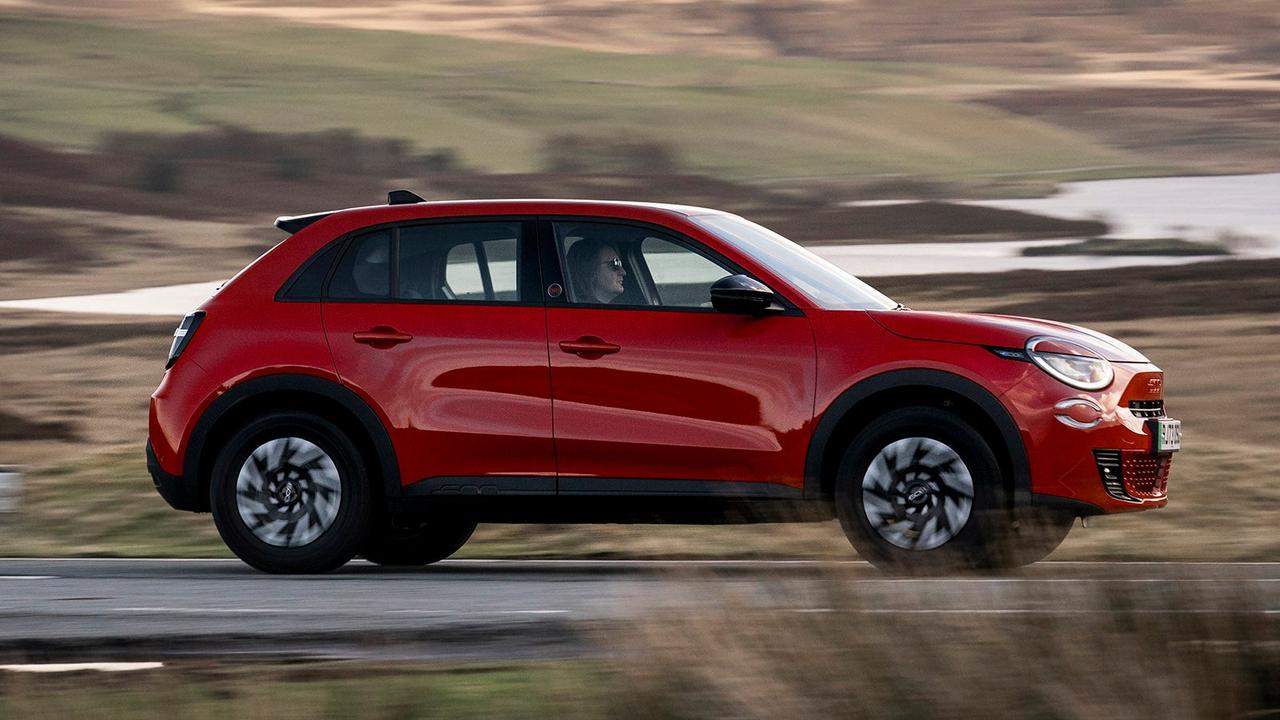
On the road, the 600e feels surprisingly stiff and firm. There's some constant patter over anything but very smooth surfaces, although the overall harshness is low, so it doesn't impact occupant comfort. You sense the suspension's been tuned well, however, so there's plenty of compliance to absorb the severity of big impacts and also handle the weight of the 600e's battery pack.
Thanks to the well-judged suspension, the ride isn't punishing despite the car's firmness, and you're rewarded with a fairly sporty driving experience. The body responds well to quick direction changes and big undulations in the road, and never feels like it's about to be thrown off its line. That translates to plenty of confidence when driving at higher speeds, and a stable sensation on the motorway.

The sporty setup doesn't extend to the steering wheel, however, with a very light setup that gives you no real sense of what the front wheels are doing. There's a synthetic buildup in weight as you turn the wheel further, but this has little bearing on how loaded the front wheels actually are. It won't bother anyone who's just driving the 600e around normally, but it makes the car feel a bit inert if you try to drive more spiritedly.
As you'd hope from a car without a fuel-powered engine, refinement in the 600e is excellent at urban speeds. Head up to higher speeds and you'll start to notice more audible thuds from the suspension and an increasing roar from the tyres. These sounds aren't any worse than the 600e's engine-powered competitors, but end up somewhat highlighted by the lack of white noise from an engine. Nothing you can't solve by turning the stereo up though…
































